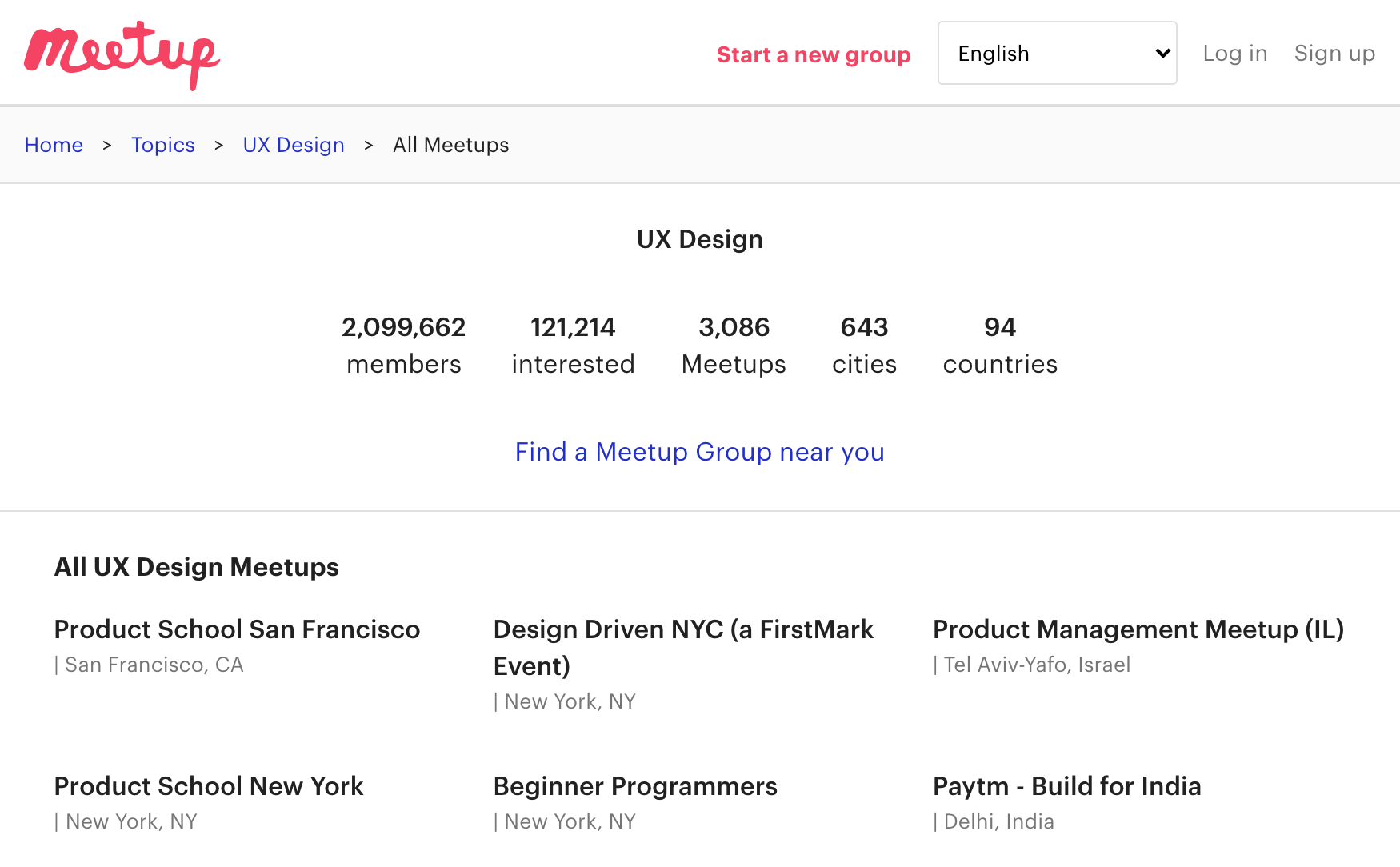Currently, the UX industry is seeing a large growth with numerous professionals entering the field; and the associate levels career-seekers are exceeding the number of available positions. This coveted starting point is becoming more competitive to obtain. But once you are in, what happens next?
As time passes, the “associate” title starts to feel a little uncomfortable. Despite the numerous benefits the associate role brings, such as the ability to learn, ask questions, get directions, and experiment with different areas in UX; it’s natural to want to progress past entry-level. While it’s worth understanding the different roles and titles in UX, how to grow professionally in UX, and some unique aspects of mid-level UX Design role; for this article, I’d like to share my experience and some tips on growing from associate to a mid-level user experience designer.
Seek Feedback

When you are an associate, it’s definitely a great time to build bonds with more experienced designers and learn from them. Being self-aware and objective with your strengths and weaknesses is critical for growth. You may have some blind-spots that someone can point out, or direct you to a resource that can propel your growth. It also is incredibly helpful to get some constructive feedback. Having a boss, a trusted coworker(s), and/or mentor(s) who see your work and can provide this feedback is priceless. If you are so lucky to find people that provide feedback, take it graciously. The ability to take that constructive feedback, reflect on it, and if applicable, make an action plan around it – can be your map and compass to the next phase.
Here are some great resources for finding a UX mentor:
Keep Learning
Although this will not come as a surprise, as a UX professional, you are expected to keep up with the field outside of work. Reading up, listening to podcasts, or watching videos on the latest technologies, tools, and studies is part of the profession. There are also online tutorials and courses that provide great foundational insights, help build or refine UX skills. Never shying away from learning will keep you competitive. Use content aggregate websites like Dribbble, Flipboard, and Product Hunt for inspiration and to keep up with design trends.

As someone that loves to learn, I decided to pursue my master’s degree in the field. With a bit over a year of experience, I applied to Bentley’s masters of Human Factors in Information Design program. I find the courses incredibly rewarding and applicable to my daily work. Although it is challenging to balance work and studies, there is enough synergy between the two to make it worthwhile.
Here are some lists of resources to keep you learning UX:
Engage with the UX Community

Another avenue for growth is through engagement. Attend UX meetups and conferences when given the opportunity. Even if you are on the shy side, it’s worth making the effort to show up to events or consider volunteering. You will most likely learn something new and over time you will get much more familiar with the UX community in your area. It’s a little scary at first, but taking the steps to assist with events will make it easier for you to connect and collaborate with others. Growing your professional network not only increases your visibility but also provides you with more opportunities to learn and build different areas of expertise. Your LinkedIn feed and Slack channel will become filled with great insights and resources to help you grow.
Here are a few online UX communities to engage with:
Become a Mentor

Mentoring is incredibly rewarding and a great way to refine your core skills. As a practitioner of UX, you already know enough to help others that are looking to enter the industry. While those feelings of anxiety and excitement of starting on a new path are still fresh for you, you are in a prime place to mentor those looking to break into the profession. You will be surprised to find out how much you already know and how your insights can really make a difference to someone looking to take those first steps. You may be thrilled to see some of your mentees get positions at great companies, while also feeling a little upset to see others that were excited about UX back out after realizing how much work it takes to become proficient enough to enter the field.
Tools to become a mentor:
Speed Up Your Growth
When I reached out for advice from the industry, it became clear that the fastest way to progress your UX career is to change jobs. Having many different positions allows you to grow your skills faster by giving you exposure to new problems and opportunities to collaborate with new professionals. I watched some of my former cohort classmates, acquaintances, and coworkers change companies and quickly progress through ranks. Don’t get discouraged if you want to remain in your current company and move up, but make sure you have a plan for seeking out the right opportunities to grow your skills and then advocate for yourself for a promotion.
Next Steps
As a mid-level designer, there are more responsibilities with higher expectations to balance out the title and salary. The next phase of working towards the senior level is just as challenging and exciting. The relationships and resources that helped you get to this point are important to maintain and nourish. As we continue to progress, it’s always worthwhile to reflect and course-correct as needed. Iteration and refinement will help you craft your designs as well as help you design your career path. I wish you all the best on your journey, wherever it takes you.